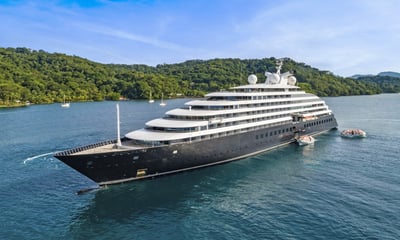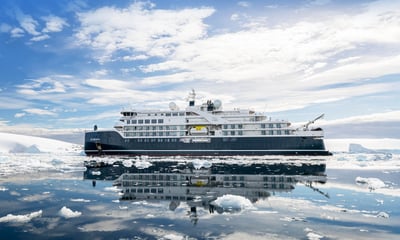Frequently asked questions - New Zealand tours
New Zealand is a stunning destination with endless activities for travellers. From the lively streets of Auckland to the tranquil beauty of Milford Sound, there’s no shortage of iconic sights and hidden gems to discover. Visit the cosmopolitan hub of Auckland, explore the vibrant art scene in Wellington, cruise through the stunning fjords of the South Island and more.
Spring (September to November) is a popular time to see the country’s landscapes in full bloom, while summer (December to February) offers long, warm days ideal for outdoor adventures and scenic cruises through New Zealand’s majestic fjords.
New Zealand enjoys a varied climate across its regions, with four distinct seasons.
Spring
Spring is mild, with temperatures ranging from 10°to 22°C, ideal for blooming gardens and fresh landscapes.
Summer
Summer is warm and sunny, with daily temperatures ranging from 20° to 30°C, perfect for beaches and outdoor activities.
Autumn
Autumn sees cooler days with golden foliage, with temperatures ranging from 7°to 24°C.
Winter
Winter is cold, particularly on the South Island, with temperatures ranging from 1° to 15°C, making it great for skiing and snow sports.
New Zealand is renowned for its world-class wine regions, with some of the best vineyards in areas like Marlborough, Hawke's Bay and Central Otago. For those seeking a wine experience, we also offer optional activities at Waiheke Island, where you can enjoy a wine tour and sample some of the region's finest wines.
Most of our New Zealand trips don’t include a visit to the famous Hobbiton movie set near Matamata, but we often schedule free days when you could explore this magical location at your own pace. You can also extend your stay in New Zealand with our Arrive Early and Stay Behind options (when available, please check Important Info) to add extra experiences like Hobbiton.
In spring, layers are key to enjoying mild days and cool evenings, so pack t-shirts, light knitwear, and a jacket. In summer, breathable clothing is ideal, with shorts, t-shirts, and light dresses perfect for warm days. A light jacket is handy for the evenings. As temperatures cool in Autumn, layers are essential. Bring a jacket and comfortable shoes to explore the outdoors. In winter, a warm coat, scarf, and gloves are necessary for the winter months, particularly if you plan on visiting the South Island or ski resorts.
Many of our New Zealand cruise packages include a one-way flight, as the cruise typically returns to the departure city. Please check the deal page for details on included flights from cities such as Sydney, Melbourne and Brisbane. For departures from Adelaide and Perth, contact one of our friendly team members to find out more.
New Zealand tours often cover mid-length distances, especially when exploring the North and South Islands. Many of our deals include cruises, so you’ll have relaxing days at sea to unwind. We also offer packages with travel by rail on the famous Northern Explorer and TranzAlpine trains, allowing you to experience the breathtaking landscapes of both islands in comfort and style.
We carefully select quality accommodations for our tours, focusing on comfort, cleanliness, and excellent service. Hotels in New Zealand tend to be spacious and modern, offering a relaxing base after a day of exploring.
Australian citizens and permanent residents do not need a visa for short stays in New Zealand (up to 90 days). For more details, we recommend checking the latest entry requirements through the official New Zealand immigration website.
New Zealand operates on New Zealand Standard Time (NZST),GMT +12. During Daylight Saving Time (NZDT), from the last Sunday in September to the first Sunday in April, clocks move forward to GMT +13. During this period, New Zealand is usually two hours ahead of Sydney.
New Zealand uses the New Zealand Dollar (NZD). ATMs are widely available, and you can easily exchange Australian dollars (AUD) for NZD at airports or local currency exchange offices.
Most places in New Zealand accept both cash and cards, with card payments widely accepted in hotels, restaurants and shops. It’s a good idea to carry a mix of both, particularly in more remote areas.
If you need to stay connected while on tour, getting a travel SIM or activating international roaming on your phone is recommended. New Zealand has excellent mobile coverage, and most hotels, shopping centres and public transport offer free Wi-Fi.


















